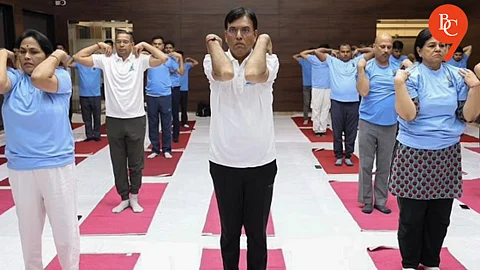

The Indian government has significantly re-prioritized its sports funding, with a massive financial boost for yoga and notable reductions for mainstream sports like football and athletics. In a bid to promote Indian tradition globally and secure its inclusion in major multi-sport events, yoga has received an almost 400% hike in financial assistance. The figures were tabled by Sports Minister Mansukh Mandaviya in the Rajya Sabha during the ongoing monsoon session.
From a modest ₹1.3 crore in 2022-23, Yogasana India has been allocated ₹4.89 crore for 2024-25, making it the highest percentage gainer among the 25 sports listed. This substantial increase places yoga’s funding on par with chess (₹5.2 crore) and even ahead of popular sports such as basketball (₹4.75 crore), volleyball (₹4.39 crore), and squash (₹4.45 crore). According to Udit Sheth, president of Yogasana India, this funding is crucial for their mission. "As a federation, we started getting funding very recently from the government," he said. "Unlike many other sports that have come to India from abroad, we are taking India’s heritage to the world. For that, we need to do substantial work."
Conversely, the All India Football Federation (AIFF) has seen its government assistance slashed by nearly half, from ₹15 crore in 2022-23 to ₹8.78 crore in 2024-25. While this is a slight increase from the ₹6.95 crore it received in 2023-24, the sport remains one of the biggest losers of public funds in recent years. AIFF president Kalyan Chaubey clarified that the higher budget in 2022-23 was due to hosting the U-17 Women’s World Cup. "In the other years, the allocation was based on the annual calendar depending on our requirements. According to that, the funding has been standard," he stated.
Other major sports have also experienced a dip in their allocations. Athletics saw its funding reduced from ₹30 crore in 2022-23 to ₹26 crore in 2024-25, and the Boxing Federation of India's share decreased by ₹2 crore, from ₹24 crore to ₹22 crore. A sports ministry official noted that these "minor fluctuations" are normal and depend on the specific needs of each federation. Meanwhile, the Table Tennis Federation of India enjoyed a significant increase, with its funding rising from ₹8 crore to ₹12 crore. "Our requirements have changed and so have our goals," said secretary general Kamlesh Mehta, explaining the need for more support staff and increased tournament participation.
As a demonstration sport at next year’s Asian Games in Japan, and a likely inclusion in India’s bid for the 2030 Commonwealth Games and the 2036 Olympics, yoga is being moved "from ashrams to arenas," as Sheth puts it. "Next year, yoga will be included as a demo sport at the Asian Games. We have a lot of work to do to make it a regular sport," he added.
